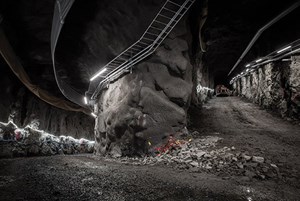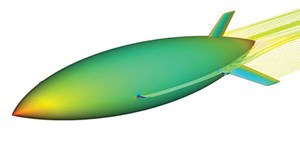Articles
H2T: Technology Spotlight
S. SHARMA, Technical Editor
H2 PRODUCTION
New technologies for green H2 purification
Shell and BASF have collaborated to evaluate and de-risk BASF’s Puristar® R0-20 and Sorbead® adsorption technologies for use in green H2 production. The two technologies purify and dehydrate the product H2 stream from the water electrolysis process, which can then be used for liquefaction and transportation, as an energy source or chemical feedstock. According to BASF, the Puristar and Sorbead technologies are in Shell’s portfolio for potential use in Shell’s global green H2 projects.
Puristar R0-20 is a versatile catalyst that can remove trace oxygen from the H2 stream following electrolysis. Sorbead adsorption technology provides a low-energy solution for H2 dehydration to reliably achieve low water outlet specifications.
The H2 product stream from water electrolysis contains water and remnant oxygen, which are impurities that must be removed prior to downstream processing or utilization of the H2. First, the Puristar R0-20 catalyst removes the oxygen by converting it to water in the DeOxo unit. After the DeOxo step, Sorbead adsorption technology is used to dehydrate the H2.
Following the purification, the H2 can be used as an energy source or chemical feedstock. Through recent research and development and pilot activities, BASF has created a new DeOxo design tool that focused specifically on optimizing DeOxo units operating downstream of an electrolyzer. This new modeling tool allows for the design of smaller DeOxo vessels, providing capital and operating expenditure benefits to the project.
According to BASF, Puristar R0-20 catalyst operates at low temperatures and with minimal precious metal content in the catalyst. Additionally, BASF Sorbead adsorption provides several advantages for green H2 applications, including a minimal energy footprint vs. alternative materials, reliability, simple operation, high capacity for water and lower regeneration temperatures vs. activated alumina or molecular sieves, as well a long life, operational turndown flexibility and immediate on-spec gas at startup.
According to BASF, green H2 is a major component in achieving the common goals of the two companies towards net-zero emissions, and the de-risking of Puristar R0-20 and Sorbead adsorption technologies
is an important step in the process.
H2 EQUIPMENT
Thermal mass flowmeters for H2 measurement
Fluid Components International (FCI) has launched the ST series thermal flowmeters as rugged flowmeter solutions useful for engineers and plant operators responsible for producing, using, dispensing or distributing H2 gas. The H2-calibrated flowmeters provide a range of products for varying pipe diameters and virtually any installation conditions and require no routine maintenance.
H2-calibrated thermal mass flowmeters are well suited to meet the conditions of these applications. Thermal mass flowmeters work based on the principles of heat transfer. H2 has a very high heat transfer rate and to measure it with high accuracy and repeatability, a thermal flowmeter should be calibrated in actual H2. Applying theoretical gas equivalency equations to “correct” readings for H2 is simply inadequate and ineffective for this gas.
FCI’s ST series thermal flowmeters are calibrated under custom installation conditions in H2 to achieve accuracy and repeatability in their intended application. The direct mass flow measurement and inherently multivariable systems provide both flow and temperature outputs. Thermal mass flowmeters, designed without moving parts, also virtually eliminate wear, breakage and maintenance. The ST series has a wide selection of process connections, including compression fittings, NPT male and female threaded connections, flanges, ball valves, hot taps and more to ensure installation site compatibility.
The ST family offers solutions from small, compact meters with basic 4-20mA analog output to feature-enhanced versions with multiple 4-20mA outputs; digital bus communications such as HART, Modbus, Foundation Fieldbus and Profibus; in-situ calibration; self-checks; and on-board data logging, among others. Furthermore, all FCI ST series H2 flowmeters measure direct mass flow, carry global agency approvals for installation in Division 1/Zone 1 environments, and offer superior ruggedness and long-life with NEMA 4X/IP 67 rated low-copper content aluminum or 316 stainless-steel enclosures.
Standard turndowns of 100:1 and flow ranges from 0.25 standard ft/sec–1,000 standard ft/sec (0.07 normal m/sec–305 normal m/sec) ensure their application versatility. The ST’s transmitter/electronics can be integrally mounted with the flow body or may be remotely mounted up to 1,000 ft (305 m) away. They are available in either DC- or AC-powered versions. Their readout/display options include basic flowrate and totalizer to a best-in-class multivariable digital/graphic backlighted LCD with FCI’s exclusive through-the-glass activated 4-button array.
In H2 applications with limited straight-runs and/or for operating in transitional flow ranges that can adversely affect accuracy and repeatability, ST series flowmeters are also optionally available with and calibration-matched to Vortab® flow conditioners to ensure installed performance.
H2 STORAGE AND TRANSPORTATION APPLICATIONS
Long-range trucks powered by H2 fuel cells in the testing stage
Volvo Trucks has begun to test vehicles that use fuel cells powered by H2, which have an extended range of as much as 1,000 km (more than 621 mi).
To decarbonize the transportation sector, Volvo Trucks offers battery electric trucks and trucks that run on renewable fuels, such as biogas, and are now adding fuel cell trucks powered by H2 to its portfolio. A fuel cell generates its own electricity from the H2 onboard instead of being charged from an external source. The only byproduct emitted is water vapor.
Volvo’s H2 fuel cell technology has been under development and is running successfully on the test track. According to the company, irrespective of transport assignments, the combination of battery electric and fuel cell electric can eliminate CO2 exhaust emissions from trucks. The technology is expected to be in pilot stage in a few years and become commercially available in the late 2020s/early 2030s. The fuel cell electric trucks will have an operational range comparable to many diesel trucks (up to 1,000 km) and a refueling time of less than 15 min. The total weight can be around 65 t or even higher, and the two fuel cells have the capacity to generate 300 kW of electricity onboard.
According to Volvo, H2-powered fuel cell electric trucks will be especially suitable for long distances and heavy, energy-demanding assignments. They could also be an option in countries where battery charging possibilities are limited.
Fuel cell technology is still in the early phases of development, with several benefits and challenges— i.e., the large-scale supply of green H2 and the lack of H2 refueling infrastructure for heavy vehicles.
According to Volvo, the supply of green H2 will increase significantly during the next several years since many industries will depend on it to reduce CO2. Fuel cell trucks will then be an important complement for longer and heavier transports. Volvo has commenced the testing of a fuel cell articulated hauler prototype, as well.
SSAB, LKAB and Vattenfall inaugurate facility for fossil-free H2 gas storage, steel production
SSAB, LKAB and Vattenfall have inaugurated HYBRIT’s pilot facility for fossil-free H2 gas storage at Svartöberget in Luleå, Sweden. The rock cavern storage facility is the first of its kind in the world. The inauguration ceremony marks the start of the 2-yr test period, which will run until 2024.
The HYBRIT initiative was launched in 2016 by SSAB, LKAB and Vattenfall. The H2 storage facility will play a very important role in the overall value chain for fossil-free iron and steel production. Producing fossil-free H2 gas when there is excess electricity and using stored H2 gas when the electricity system is under strain will ensure a steady production of sponge iron, the raw material behind fossil-free steel.
According to the Swedish Minister for Energy and Digital Development, Sweden will create new jobs by leading the climate change transition, and the HYBRIT project is an example of this transition using green technology and innovation. Building the energy system of the future requires taking advantage of opportunities to store energy and ensure that large energy users can be flexible in their consumption. HYBRIT’s H2 storage design can offer these advantages.
HYBRIT is being developed so that it is in line with the electricity system of the future, with more weather-dependent electricity generation. The storage facility is different than conventional ones and enables the HYBRIT initiative to take a lead in the fossil-free transition. According to Andreas Regnell, Chairman of the Board, Hybrit Development AB and Senior Vice President and Head of Strategic Development at Vattenfall, HYBRIT can become important for facing climate challenges and enabling fossil-free living within one generation.
According to Martin Pei, Chief Technology Officer, SSAB, SSAB can transform operations and cut Sweden’s and Finland’s CO2 emissions by 10% and 7%, respectively. The H2 storage facility is important to ensure stable steel production and a milestone in the development of HYBRIT.
Lars Ydreskog, Senior Vice President of Strategic Projects at LKAB, described H2 gas and its storage as central to the transition to fossil-free steel. In 4 yr, HYBRIT technology will be used on a large scale in the first demonstration plant in Gällivare, Sweden. The plan is to then build more sponge iron factories. The pilot project will provide valuable knowledge for the continuing work on creating the world’s first fossil-free value chain for the iron and steel industry and aid LKAB in achieving its goal of high H2 production capacity. According to Klara Helstad, Head of Sustainable Industry Unit at the Swedish Energy Agency, the pilot plant is also important to test and understand how large-scale H2 storage works, which is essential for a fossil-free value chain for the iron and steel industry and a robust future electrical system.
The technology for storing gas in a lined rock cavern (LRC) is well proven and has been used in southern Sweden for about 20 yr for storing natural gas. The technology is taking a step forward with the development of storing H2 gas, and the storage facility will also be used more dynamically, being filled and emptied at pace with the H2 production.
The pilot plant has a size of 100 m3. At a later stage, a full-scale H2 gas storage facility measuring 100,000 m3–120,000 m3 may be required—such a facility will be able to store up to 100 GWh of electricity converted to H2 gas, which is sufficient to supply a full-sized sponge iron factory for 3 d–4 d.
SSAB, LKAB and Vattenfall have invested $23.4 MM in H2 storage alone, with the Swedish Energy Agency contributing more than $6.5 MM. The following are notable facts about the H2 gas storage facility:
- Construction of the H2 gas storage facility began in May 2021. H2 storage will be tested in the storage facility using known LRC technology. This means the gas is stored underground in a rock cavern with walls that are lined with a selected material as a sealing layer.
- The fossil-free H2 gas is produced by water electrolysis using fossil-free electricity.
- It is important to construct such a facility in rock that maintains its good qualities. For example, the bedrock in Svartöberget consists mainly of amphibolite with elements of pegmatite and red granite.
- The rock cavern in Svartöberget where the gas is stored is about 30 m below ground level and 100 m from the entrance.
Jacobs’ research provides roadmap for the future of H2 plane refueling
Airport owners and operators must plan for the delivery and storage of H2 if they are to be ready to fuel H2-powered aircraft. New research by Jacobs provides a roadmap for airports to implement H2 fueling technologies, building on its work for the Aeronautical Technology Institute FlyZero report Airports, Airlines and Airspace: Operations and H2 Infrastructure.
Due to the length of time it takes to plan, design, consult and implement new airport infrastructure, airports must make provisions ahead of the first commercially available H2-powered aircraft expected in the early to mid-2030s.
These scenarios can be used by airports and provide a route to scaling up H2 availability over time. For example, a large airport may start by implementing Scenario 1 for fueling aircraft, while the required infrastructure for the implementation of Scenario 2 or 3 is being built.
The new roadmap provides airports with steps that can be incrementally implemented to ensure H2-powered flights are able to take off as soon as aircraft are available. It recommends that airports start with providing airside H2 gas storage and refueling stations in time for the first flights, before developing more advanced liquid H2 storage and gas pipelines for fueling planes by the early 2050s.
These sources will be able to provide power beyond the planes and airport infrastructure. The report suggests H2 gas blending could power heating in terminals by the mid-2040s, eventually moving to 100% H2 gas heating in the 2050s. If an airport can produce H2 through electrolysis onsite, it could become an energy hub for its local community. This would provide businesses, public services and homes with carbon neutral power, generating social value.
According to Jacobs’ Global Solutions Director for Aviation, an early adoption of fueling infrastructure is critical to the implementation and success of H2-fueled aircraft. H2 has the potential to be the core component for the decarbonization of aviation. Airport operators and owners need partnerships with local businesses and other transport operators to initiate the use of H2 in the immediate term. By incrementally building the H2 supply and distribution of infrastructure from a short-term starting point, airports can be ready for H2-powered planes as soon as they are commercially viable.
Emissions generated from flights account for most of an airport’s climate impact. Around 80% of global aviation sector emissions come from flights longer than 1,500 km. It is estimated that the use of H2-powered aircraft could reduce the climate impact of flights by 50%–75%. Airbus has identified a H2-combustion propulsion system to potentially provide a net-zero commercial aircraft by 2035.
Successful wind tunnel test of H2-powered Pipeline-In-The-Sky airship
H2 Clipper, an alternative energy and aerospace company developing uniquely capable H2-powered airships and end-to-end H2 infrastructure solutions, has completed a simulated wind tunnel test using computational fluid dynamics (CFD) of its H2-powered Pipeline-In-The-Sky airship. The analysis confirms that the airship’s aerodynamic design achieves an extremely low level of residual drag and is another step in validating the airship’s operating performance and the company’s cost modeling.
According to H2 Clipper, the successful CFD analysis is a major milestone for the development of the Pipeline-In-The-Sky airship and one step closer to the goal of providing the fastest, most flexible and efficiently scalable way to transport fuel-grade H2 to market worldwide.
The H2 Clipper airship design is the result of radically innovating and re-thinking lighter-than-air flight for global fuel and cargo transport. The airships offer unprecedented speed, payload and cost advantages, including the following:
- 70% lower cost vs. traditional air freighters
- Payloads of up to 277 t
- 7–10 times faster than shipping by truck or cargo vessel
- 100% carbon-free.
H2 Clipper has received multiple patents for using an airship to deliver liquid H2 to market, offering economic and logistical advantages over other methods of bulk delivery of H2. By transporting cheap and clean power produced from renewable sources to markets with high energy demand, H2 Clipper aims to solve the economical and effective challenges of transporting H2 from where it can be produced at the lowest cost to where it is most needed. H2 Clipper anticipates completing the construction of a prototype in 2025, with the goal of flying its first full-sized airship in 2028.
ZeroAvia signs joint development to decarbonize aviation
ZeroAvia, a company specializing in zero-emissions aviation, has signed a joint development agreement with Textron Aviation on the development of ZeroAvia’s H2-electric, zero-emissions powertrains for the Cessna Grand Caravan aircraft. ZeroAvia will obtain a supplemental type certificate to retrofit the Grand Caravan single-engine utility turboprop with the ZA600 zero-emissions powertrain, targeting commercial and cargo operators.
The Cessna Grand Caravan’s strong wing design enables the aircraft to mount the H2 fuel tanks under the wings, ensuring operators can maintain seat capacity or cargo space, while transitioning to zero-emissions propulsion systems.
According to the company’s press release, ZeroAvia will develop its ZA600 powertrain system for the Grand Caravan with data, engineering and certification support provided by Textron Aviation. ZeroAvia aims to obtain certification for the 600-kW powertrain as early as 2025, enabling customers to operate zero-emissions flights.H2T






